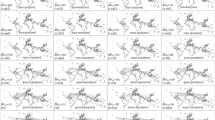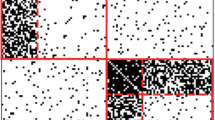Abstract
The economies of China-Japan-Korea (CJK) are complementary, with their proximity resulting in the three countries having a high degree of interdependence with respect to trade. Currently, trade among these countries relies mainly on port-centered shipping. The development of the shipping network is integral for in-depth integration of CJK trade. This paper analyzes the overall characteristics, centrality, spatial structure, and vulnerability of the CJK shipping network using the methods of complex network analysis, blocking flow theory, and interruption and deletion of hub ports. The main findings are as follows: 1) The CJK shipping network has a small average path length and clustering coefficient, and its degree distribution follows a power-law distribution, which make the network present obvious characteristics of a Barabási-Albert scale-free. 2) The characteristics of the multi-center point of the CJK shipping network can alleviate traffic pressure. At the same time, the network shows a clear hierarchy in the port transportation system, with cargo transport relying mainly on the ‘hub port-hub port’ connection. 3) The CJK shipping network is relatively stable. Compared with ports in Japan and Korea, the main hub ports in China have a greater impact on the stability of the shipping network, in particular those ports of the central coastal region, including Shanghai, Ningbo, and Lianyungang.
Similar content being viewed by others
References
Black W R, 2003. Transportation: A Geographical Analysis. New York: The Guilford Press.
Cai Yuanyuan, Wang Hong, Fan Yanjing, 2008. Complex networks theory and its application in public traffic network. Information Technology and Informatization, (2): 18–19, 23. (in Chinese)
Coolen A C C, Sherrington D, 1993. Dynamics of fully connected attractor neural networks near saturation. Physical Review Letters, 71(23): 3886–3889. doi: 10.1103/PhysRevLett.71.3886
Ducruet C, Lugo I, 2013. Structure and dynamics of transportation networks: models, methods and applications. In: Rodrigue J P, Notteboom T, Shaw J. The SAGE Handbook of Transport Studies. London: SAGE Publications, 347–364
Fan Chenghao, 2007. Research on CRE logistics network planning based on hub and spoke theory. Beijing: Beijing Jiaotong University. (in Chinese)
Gao Ziyou, Wu Jianjun, Mao Baohua et al., 2005. Study on the complexity of traffic networks and related problems. Journal of Transportation Systems Engineering and Information Technology, 5(2): 79–84. (in Chinese)
He Cheng, 2007. Complex Network Properties of the Chinese Railway Network. Guangzhou: Sun Yat-sen University. (in Chinese)
Jiao Jingjuan, Wang Jiao’e, 2014. Spatial structure and evolution of Hainan airlines network: an analysis of complex network. Geographical Research, 33(5): 926–936. (in Chinese)
Kaluza P, Kölzsch A, Gastner M T et al., 2010. The complex network of global cargo ship movements. Journal of the Royal Society, Interface, 7(48): 1093–1103. doi: 10.1098/rsif.2009. 0495
Li Xinhua, Zhang Zhaoning, Hou Rui, 2009. Research of the structural stability of the route network system. Journal of Transportation Engineering and Information, 7(1): 80–85. (in Chinese)
Mo Huihui, Wang Jiao’e, Jin Fengjun, 2008. Complexity perspectives on transportation network. Progress in Geography, 27(6): 112–120. (in Chinese)
Mo Huihui, Jin Fengjun, Liu Yi et al., 2010. Network analysis on centrality of airport system. Scientia Geographica Sinica, 30(2): 204–212. (in Chinese)
Mu Xiangwei, Chen Yan, Yang Ming et al., 2009. Topological features of liner shipping network. Journal of Dalian Maritime University, 35(2): 34–37. (in Chinese)
Rodrigue J P, Comtois C, Slack B, 2013. The Geography of Transport Systems. 3rd ed. London: Routledge.
Scott J, 2000. Social Network Analysis: A Handbook. 2nd ed. London: SAGA Publications.
Taha A F, Piust R E, 2004. Faith nxaining systems for uifian railway tunneling projects. Geotechnical Special Publication, 1555–1565
Tian Wei, Deng Guishi, Wu Peijian et al., 2007. Analysis of complexity in global shipping network. Journal of Dalian University of Technology, 47(4): 605–609. (in Chinese)
Wang Jiao'e, Mo Huihui, Jin Fengjun, 2009. Spatial structural characteristics of Chinese aviation network based on complex network theory. Acta Geographica Sinica, 64(8): 899–910. (in Chinese)
Wang J J, Slack B, 2000. The evolution of a regional container port system: the Pearl River Delta. Journal of Transport Geography, 8(4): 263–275. doi: 10.1016/S0966-6923(00)00013-2
Wang Nuo, Dong Lingling, Wu Nuan et al., 2016. The change of global container shipping network vulnerability under intentional attack. Acta Geographica Sinica, 71(2): 293–303. (in Chinese)
Wang Shaobo, Guo Jianke, 2016. Spatial measure of traffic accessibility and market potential of the National scenic areas. Geographical Research, 35(9): 1714–1726. (in Chinese)
Watts D J, 2006. Small World: The Dynamics of Networks between Order and Randomness. Chen Yu Trans. Beijing: Renmin University of China Press, 1–10
Wirasinghe S C, Vandebona U, 1987. Some aspects of the location of subway stations and routes. In: 4th International Symposium on Locational Decisions (ISOLDE). Namur, Belgium.
Woolley-Meza O, Thiemann C, Grady D et al., 2011. Complexity in human transportation networks: a comparative analysis of worldwide air transportation and global cargo-ship movements. The European Physical Journal B, 84(4): 589–600. doi: 10.1140/epjb/e2011-20208-9
Wu Jinfeng, Pan Xuli, 2010. Study on the relationship between inbound tourism flows network and aviation network. Tourism Tribune, 25(11): 39–43. (in Chinese)
Xu Minzheng, Xu Jun, Chen Yu, 2014. Construction of Chinese aviation hub-spoke structure based on maximum leaf spanning tree. Acta Geographica Sinica, 69(12): 1847–1857. (in Chinese)
Xu X P, Hu J H, Liu F, 2007. Empirical analysis of the shiptransport network of China. Chaos, 17(2): 023129. doi: 10.1063/1.2740564
Xue Junfei, 2008. Hierarchical structure and distribution pattern of Chinese urban system based on aviation network. Geographical Research, 27(1): 23–32. (in Chinese)
Zeng Qingcheng, Teng Teng, 2015. Analysis of shipping network of maritime silk road based on methodology of complex networks. Navigation of China, 38(2): 122–125, 134. (in Chinese)
Zhao Hang, He Shiwei, Wang Dezhan, 2008. How to optimize transport capacity allocation for freight intermodal transport service network. Logistics Technology, 27(12): 55–59. (in Chinese)
Author information
Authors and Affiliations
Corresponding author
Additional information
Foundation item: Under the auspices of National Natural Science Foundation of China (No. 41571126, 41571122), Development Plan Outstanding Young Scholars in Universities of Liaoning Province (No. WJQ2015020)
Rights and permissions
About this article
Cite this article
Guo, J., Wang, S., Wang, D. et al. Spatial structural pattern and vulnerability of China-Japan-Korea shipping network. Chin. Geogr. Sci. 27, 697–708 (2017). https://doi.org/10.1007/s11769-017-0903-9
Received:
Accepted:
Published:
Issue Date:
DOI: https://doi.org/10.1007/s11769-017-0903-9




